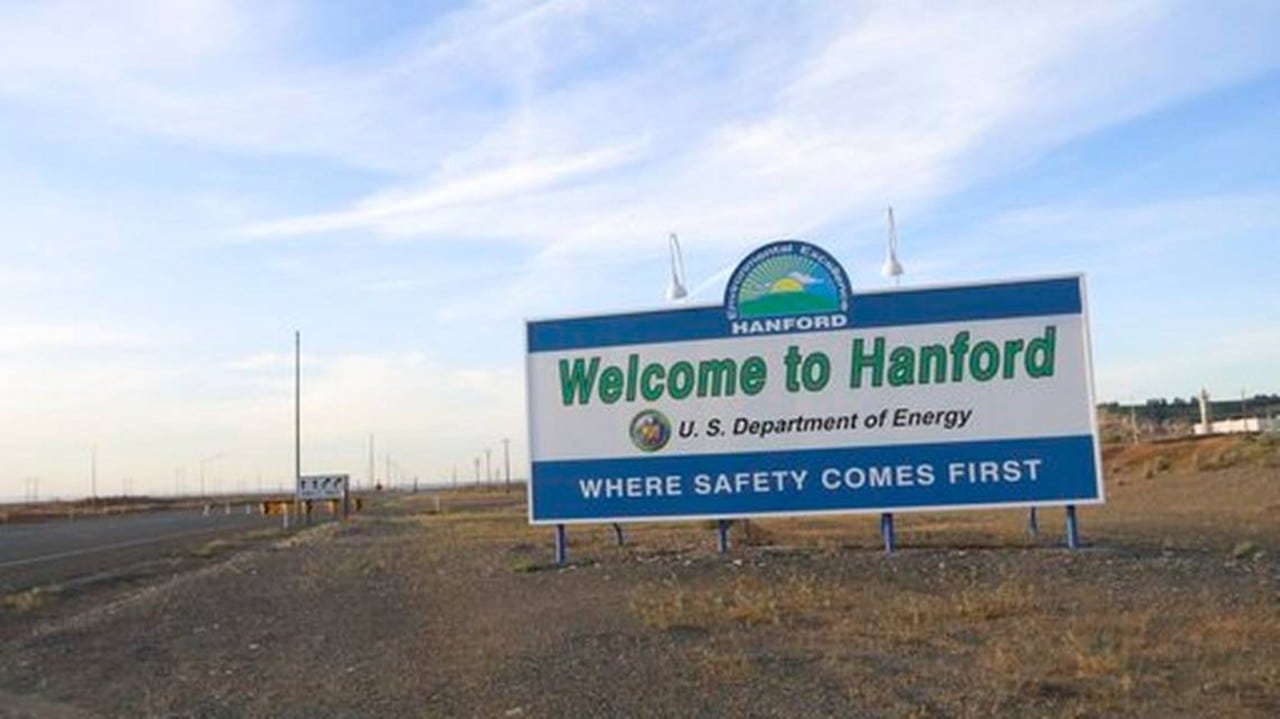
In a milestone for U.S. nuclear-weapons cleanup in Washington State, the Department of Energy since Jan. 26 has prepared 50,000 gallons of liquid radioactive waste at the Hanford Site for solidification into stable, storable glass as soon as December 2023.
By the end of the year, DOE and its contractors hope the new Tank Side Cesium Removal (TSCR) system will have removed highly radioactive cesium and other solids from some 1 million gallons of liquid radioactive waste leftover from plutonium production during the nuclear arms race with the Soviet Union.
TSCR, built by the Amentum-led tank farms prime Washington River Protection Solutions (WRPS) with subcontractor AVANTech and others, uses ion-exchange technology nearly identical to that piloted by the Tank Closure Cesium Removal project at the Savannah River Site in South Carolina in 2018.
The Hanford unit can process about five gallons of waste a minute, or 7,200 gallons a day. It cost about $130 million to build, DOE’s Hanford Site Manager Brain Vance said, and is expected to cost between $175 million to $200 million to operate over five years, John Eschenberg, the president and CEO of WRPS, said Tuesday in a Microsoft Teams press conference.
In July 2018, WRPS retained AVANTech, for $12 million, to design and build the facility to prepare about five million gallons of low-activity tank waste for vitritification in the main Waste Treatment and Immobilization Plant, said a WRPS spokesperson in a Thursday email. The total capital project cost of about $130 million includes new pumps and other infrastructure upgrades to AP Farm, the ion exchange column storage pad and the completion of the transfer line from AP-106 to the Waste Treatment and Immobilization Plant, the spokesperson said.
TSCR sits next to large underground storage tanks at Hanford’s AP tank farm near the center of the former plutonium production reservation. Waste treated by TSCR will be held in a double-shell tank until direct-feed-low-activity-waste operations begin at the Bechtel-build Waste Treatment and Immobilization Plant, less than a quarter of a mile from TSCR. DOE has a court-ordered deadline to start solidifying low activity waste in the plant by 2023.
“For the first time in Hanford Site history, we are treating a significant amount of tank waste on an industrial scale,” Vance said from the site during Wednesday’s online press conference.
TSCR is a demonstration project and, sometime before its planned five-year run is over, DOE will have to decide whether to stick with that technology and scale it up or go with another approach. The tank waste, as it sits, cannot go straight into the Waste Treatment Plant, so the agency needs to do some treatment outside the building.
The long term solution could be “more TSCRs” or something else, Vance said.
Also, using TSCR for low-activity waste does not necessarily eliminate the need for a separate pretreatment facility to ready Hanford’s more radioactive, high-level tank waste for solidification into glass sometime next decade, Vance said. DOE was building a pretreatment facility for high-level waste but put the project on hold in 2012. The future of the pretreatment facility will be affected by DOE’s ongoing talks with the Washington Department of Ecology, the state regulator for the Hanford cleanup.
There are 56 million gallons of radioactive and chemical waste held in 177 underground tanks at Hanford, where Cold War chemists, under pressure to rapidly expand the U.S. nuclear arsenal, developed a succession of plutonium extraction techniques that created several different waste streams that eventually mixed together in Hanford’s underground tank farms. The scale and the complexity of the mess is unique in the old nuclear weapons complex.
“Today marks an important step forward for our ongoing efforts to clean up the legacy of America’s atomic age,” Washington Ecology Director Laura Watson said in an emailed statement. Gov. Jay Inslee and several members of the Washington Congressional delegation also made recorded statements during the press conference in praise of TSCR.